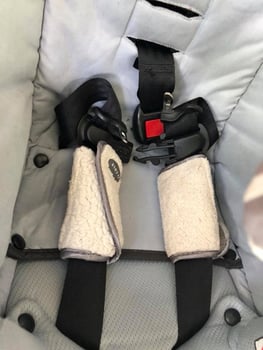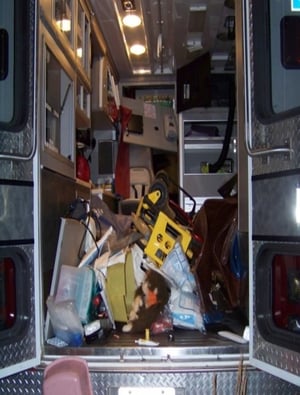Meet the New ZOLL Dispatch and ZOLL Respond CAD Solution
Will After-Market Alterations Leave You Feeling Sheepish?
(3 min read) The sheep-skin strap covers may “look cute and seem soft”, but a Georgia mother now cautions the use of aftermarket products with car seats in recent viral social media post

(3 min read) The sheep-skin strap covers may “look cute and seem soft”, but a Georgia mother now cautions the use of aftermarket products with car seats in recent viral social media post. Cruising to the grocery store was a weekly car ride for the mother and her two month old daughter. In March 2018, the family car was involved in a rollover collision on an interstate highway. The infant was ejected from the car seat. Immediately following the collision, it was discovered that the straps were tight and the car seat remained intact with the base. The mother has only one plausible explanation for the ejection of her precious child from the car seat—the infant’s t-shirt swiftly gliding against the sheep-skin, rendering the safety straps useless.
Following the collision, the mother attended a seminar on child passenger safety. The seminar detailed the best practices and common concerns witnessed by Child Passenger Safety Technicians (CPST) nationwide. A look at the manufacturers’ user manual, industry standards and regulations proved be a “real eye opener”.
Short-Term Fix = Long-Term Risk
An EMS organization may be tempted to create a home-made fix in order to realize short-term solution or financial savings. The decision to utilize a home-made product or alter an existing product may increase the risk or liability faced by an EMS organization in the event of a malfunction. The design, fabrication and testing of vehicles and equipment is best left to the professionals.
Is your home-made creation crash worthy? Has your alteration voided the manufacturer warranty? An EMS organization must consider the significance of manufacturer specifications, industry standards and regulations in every aspect of its operations.
Emergency Vehicles & Fixed Equipment
Emergency vehicle manufacturers subject their products to a series of crash tests. Within recent years, the rigor of crash test standards have contributed to safer ambulances on our nation’s roadways. Similarly, fixed equipment aboard an ambulance is subjected to similar testing for durability and safety. As emergency vehicle manufacturers produce safer features, EMS organizations must not put a brake on the progress with safety-compromising shortcuts.
Portable Equipment
Portable equipment is designed and tested using specific restraint system configurations. The product should always be used and maintained in accordance with instructions detailed in the user manual. Removing a component may reduce the effectiveness of the entire product, posing a risk to personnel and/or patient safety. While a manufacturer may provide guidance to make minor adjustments in specific circumstances, improper adjustment or reconfiguration may negatively impact personnel and/or patient safety.
Examples of Improper Actions
- Replacement of a factory component with a non-factory component.
- Installation of third-party straps, not approved by the manufacturer.
- Installation of a home-made bracket for oxygen cylinder storage.
- Installation of a clock in an ambulance patient compartment with a single drywall screw.
- Use of a product for an unintended purpose.
- Replacement of factory stretcher straps with impervious straps designed to be used on a long-spine board.
- Replacement of a cardiac monitor strap with a luggage strap.
- Removal of factory a component.
- Removal of the patient shoulder harness of a stretcher restraint system.
- Removal of interior cabinet doors.
- Improper repair of a product or component.
- Repair of a shoreline electrical cord by anyone other than an appropriately qualified professional.
- Repair of a torn flexible stretcher handle by a local tailor.
Additional Information
- NFPA 1917 Standard for Automotive Ambulances
- Commission on Accreditation of Ambulance Services (CAAS) Ground Vehicle Standard (GVS)
- Federal Specification for the Star-of-Life Ambulance (KKK Specification)
- FDA Regulations
- User manual and training programs provided by the manufacturer
Conclusion
A seemingly insignificant decision to implement a home-made fix or alter an existing product could result in a terrible loss with significant liability. Don’t learn the hard way! A shortcut is not worth the short-term financial savings. The decision would be shameful if harm was caused to a patient or EMS personnel as a result. An EMS organization must understand the contents of the manufacturer-provided user manual, industry standards and regulations which impact their operations. Be confident in your vehicles, fixed equipment and portable equipment will perform safely when it matters most.
Related Posts
Collect More Revenue Faster: The Pivotal Role of Clear, Concise, and Complete Documentation
ZOLL Pulse Blog
Subscribe to our blog and receive quality content that makes your job as an EMS & fire, hospital, or AR professional easier.
ZOLL Pulse Blog
Subscribe to our blog and receive quality content that makes your job as an EMS, fire, hospital, or AR professional easier.





